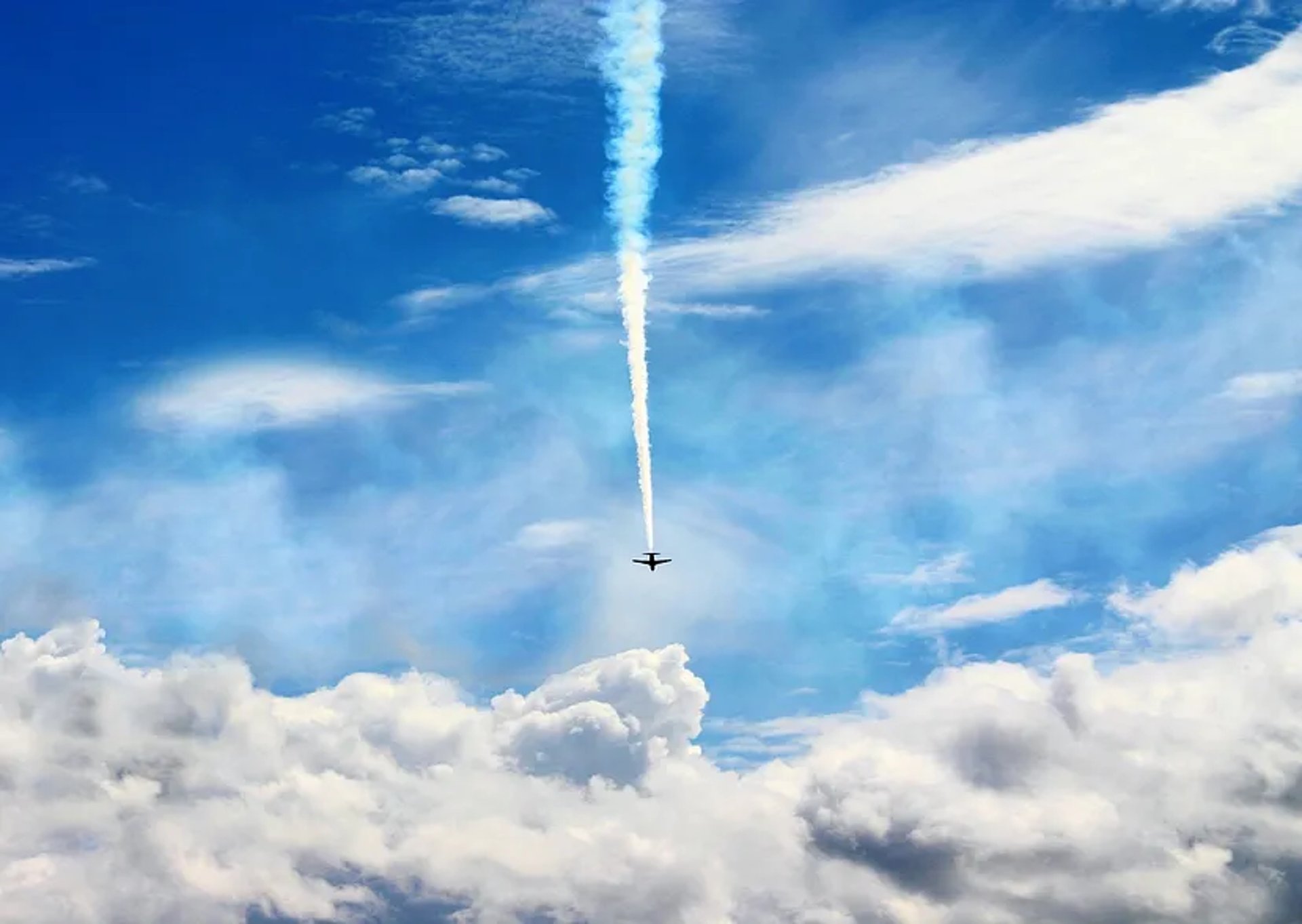
The Science Behind Contrails: How Aircraft Create Vapor Trails
Contrails
CURIONIS
The Science Behind Contrails: How Aircraft Create Vapor Trails
Have you ever noticed tail-shaped enigmas skim through the skies?
It is hardly possible for someone to have never marvelled at the enchanting dance of the clouds floating above our view. Don’t you engage in silent monologues while admiring the ever-changing sky’s adornment by clouds? The sky’s allure shifts with each passing season. I eagerly anticipate its tranquil transformations. These clouds muse to countless songs and poems and bear diverse appellations. Nature bestows upon them varied statures, traits, and forms. And who isn’t familiar with the artistry behind their creation?
Evaporation is a natural process by which liquid water converts into its vapour form. Water vapour, being lighter than ambient air, rises into the upper strata of the atmosphere. During this lift, it gathers in the upper layers, where atmospheric conditions prompt its transformation into myriad visible particles. These particles coalesce, birthing the majestic formations we know as clouds. Over time, as moisture within the clouds intensifies, they gracefully descend to lower altitudes, enriching the Earth below with invigorating precipitation.
Amidst the canvas of clouds, another intriguing sight often graces the sky: tail-shaped clouds! Have you ever noticed those elongated trails forming a path across the heavens? They gradually widen before vanishing into the horizon. Since childhood, I’ve harboured curiosity about their origin. I once asked my father, “What are those?” His simple yet enigmatic reply was, “Signatures.” Signatures? Like the mark left by a passing cloud? But how? My understanding was limited, so I delved into some research and discovered their true nature — they’re artificial clouds known as contrails. These man-made formations stem from the exhaust emitted by jet aeroplanes. Today, let me share with you a bit more about them.
You’re likely familiar with jet aeroplanes — those powerful aircraft propelled by one or more jet engines. Unlike conventional planes, which rely on piston or turbine engines activated by propellers or rotors, jet aeroplanes soar to incredible heights and reach impressive speeds. Their true prowess is unleashed at the threshold of the speed of sound, operating optimally at lofty altitudes. Fuelling these marvels of engineering is a refined form of kerosene known as jet fuel. Soaring through the skies, jet aeroplanes epitomise the marvels of modern aviation, reaching new heights with every flight.
As we ascend into the atmosphere, the air gets colder and lighter. At these lofty heights, the exhaust emitted by jet engines is significantly hotter than the surrounding air. When this hot vapour comes in contact with the frigid surroundings, it swiftly condenses into tiny icicles, trailing the aircraft in a distinctive line of white ice, akin to the tail of a cloud. This phenomenon leaves a visible mark on the sky — an unmistakable signature of our passage through the heavens.
It is the same principle that makes our breath visible on cold days. Much like our exhaled breath condenses into visible vapour in the chilly air, contrails form behind jet aeroplanes when their hot exhaust meets the cold atmosphere at high altitudes. The longevity of these contrails varies based on atmospheric humidity. In humid conditions, contrails linger longer, dispersing slowly over time, while in drier environments, they dissipate more quickly. Interestingly, the length of contrails can serve as a weather indicator: long-lasting contrails may signal impending storms, while short-lived ones suggest fair weather ahead. Thus, these wispy trails in the sky offer subtle insights into the atmospheric conditions around us.
Such is the tale of tail-shaped clouds, artistic signatures embroidered by artificial clouds in the vast expanse of the sky. Beautiful, isn’t it? These artificial ornaments briefly loiter amid the floating daisies of the sky. Although they don’t bring rain like their natural counterparts, they offer a glimpse into the weather’s mood — the clouds run the water cycle, anyway. Clouds play a vital role in atmospheric temperature regulation. Indeed, they are the lifeblood of our planet — the ethereal blossoms that adorn the sky, nurturing life with their gentle presence.
Subhalakshmi Buragohain
Hyderabad


A jet leaves behind a contrail.


